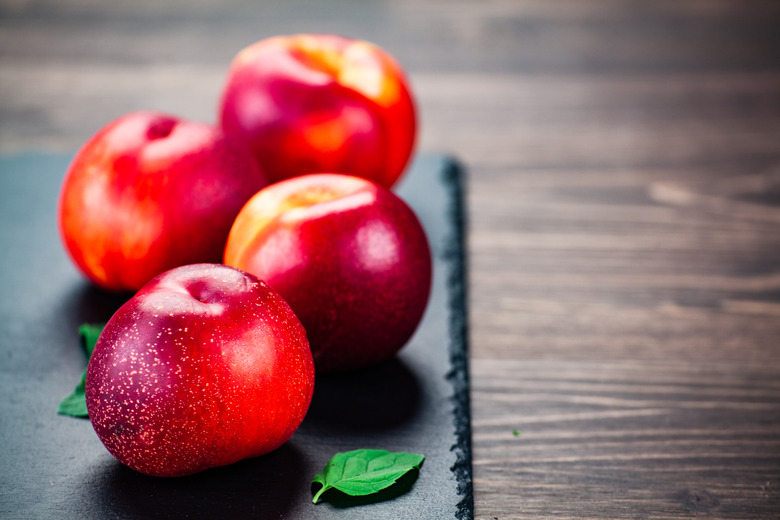How To Grow Fruit Trees From Pits
Fruits with pits, called stone fruits, contain seeds inside the pits. Stone fruit trees include peaches, nectarines and apricots. When starting fruit trees from seed, you'll likely have to wait for them to produce their first harvest for three to five years. It's important to note, however, that trees started from seed will not look the same or bear fruit that's true to type.
The propagation process starts in the summer, when pits from ripe fruit become available, and it lasts through the following spring, when it's finally time to set your saplings outside. The technique for how to grow a peach tree from a pit is the same as it is for growing other types of fruit with pits.
1. Harvest the Pits
Collect the pits from ripe fruit grown locally so your new tree will be adapted to your climate. Avoid planting pits from early-season tree varieties, as the seed in them is often too undeveloped to sprout.
2. Dry the Pits
Place the pits in an out-of-the-way section of your kitchen counter. Leave them there until their shells are dry and a little brittle. In dry climates, this will take just a few days, but in high humidity, it takes longer.
3. Remove the Seeds from Pits
Crack the pits open by crushing them slowly with a vise. Penn State Extension recommends using a nutracker. If you use a hammer, tap the pit lightly until it breaks. Whichever tool you use, take precautions not to crush the seed inside.
4. Soak the Seeds
Soak the seeds in water overnight.
5. Place Seeds in Potting Mix
Add enough potting soil to a glass jar to cover the seeds you have. Moisten the soil evenly without drenching it in water. A jar other than glass also works, but the see-through glass makes it easier for you to check whether the seeds have germinated (see Step 8). Oklahoma State University Extension notes that you can also use a plastic bag to hold the seeds and potting mix.
6. Cover Seeds with Potting Mix
Bury the seeds in the moist potting soil and cap the jar.
7. Chill Seeds in Refrigerator
Place the jar in the refrigerator. The seeds will spend fall and winter in this cold environment, a process called stratification that is necessary to get certain seeds to germinate.
8. Watch for Root Formation
Check the seeds every so often. When you see white fibrous material within the soil, the seeds have sprouted. What you see are the young roots. Keep the sprouts in the fridge if it's still frosty outside. Also, as you check your jar regularly, feel the soil with your fingers. If it's becoming dry, add more water. Stratification only succeeds if the seeds are in a cold and moist environment.
9. Fill Pots with Potting Mix
Fill small pots with potting soil one month before the last predicted frost.
10. Sow the Sprouted Seeds
Remove the sprouted seeds from the fridge and sow them in the pots you prepared.
11. Keep Seedlings Moist
Irrigate all seedlings and keep them moist while they continue to develop.
12. Transplant Seedlings Outdoors
Transplant your fruit tree seedlings outdoors after the weather warms up. Place them in a sunny spot with well-drained soil amended with organic matter. Keep them irrigated through the growing season.
Things Needed
- Pits
- Cracking tool such as a vise, hammer or nut cracker
- Bowl
- Water
- Glass jar with lid or plastic bag
- Potting soil
- Refrigerator
- Pots
- Shovel
- Organic amendment
